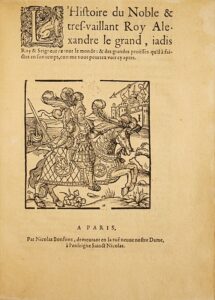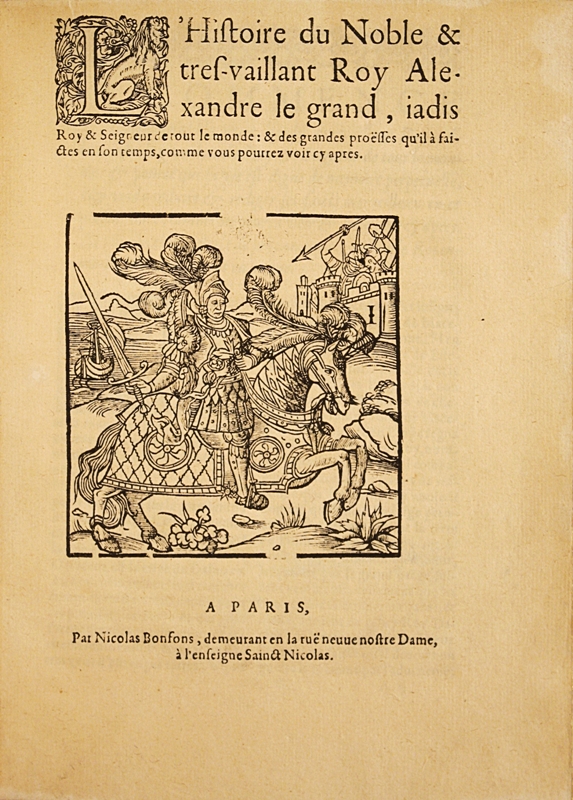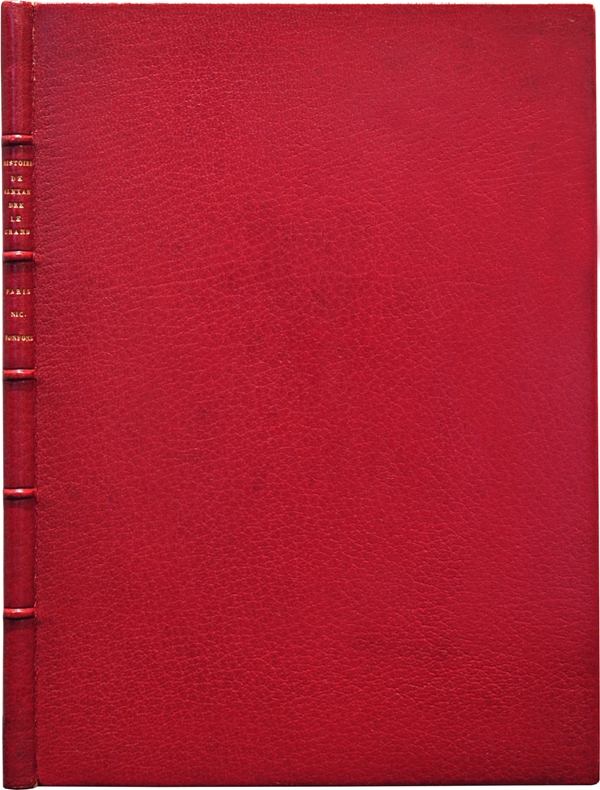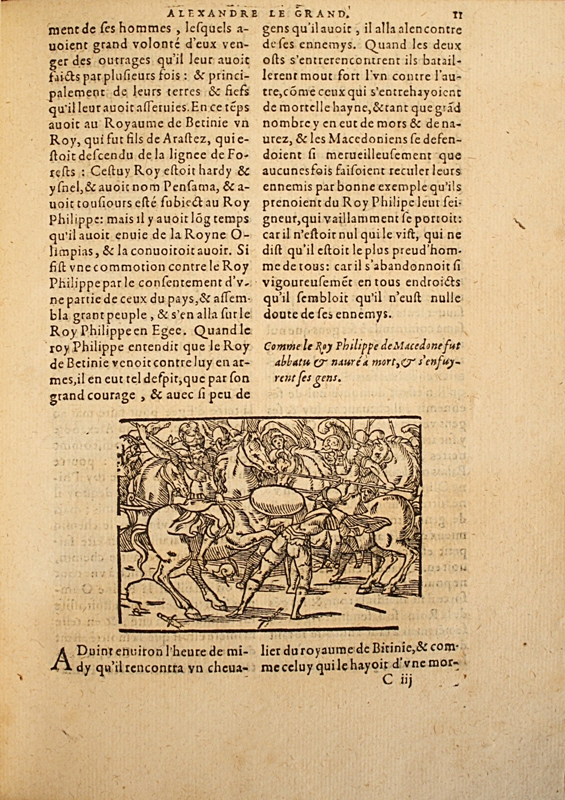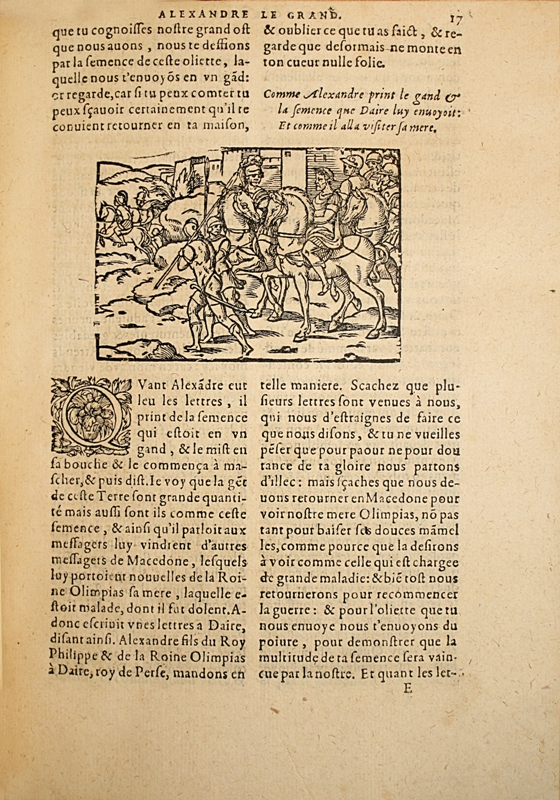Paris, Nicolas Bonfons, n.d. [towards 1585].
Small 4to [213 x 153 mm] of (1) l. of title, 44 ll. Woodcuts in the text. Bound in full red Jansenist morocco, spine ribbed, gilt over untrimmed edges, gilt inner border. Binding signed Trautz-Bauzonnet.
Illustrated edition, of the utmost rarity, of this romance of chivalry relating the history of Alexander the Grêt.
Brunet, I, 164; Brun, Le Livre français illustré de la Renaissance, p. 108; Pettegree, Livres vernaculaires français, 487.
“The first chapter encloses a description of Macedonia and a summary of its history until the time of Philip, who ‘married Olympias daughter of king Neptolomeus, Lord of the Molossians…’ The second chapter is about the origin of sciences, the fame of the Egyptians and their smartness in astronomy.
Alexander, at the age of twenty, left Macedonia and went to Aragates to consult Apollo’s oracle… He goes to Africa on an island named Victans, then to Egypt… He made build Alexandria… He crossed Syria, entered Palestine… Alexander enters into Darius’ tent, he is recognized and escapes. A battle during which Darius is defêted and flees… Darius once again defêted runs away towards Persepolis; he calls Porus for help. A new victory for Alexander. Darius is murdered by his officers – Alexander has them punished… Alexander finds a nation of people who ate men’s flesh. He locks them in two mountains... Battle against Porus... Alexander takes Porus’ capital... Embassy of Alexander in Calistrida, queen of the Amazons… Alexander’s army is attacked by ferocious animals and monsters… Fight between Alexander and Porus. Dêth of the latter… Alexander then visited the land of Ridraste whose inhabitants go naked… Alexander arrived then in the land of Tradiaque, and found on a mountain a city entirely made of precious stones… The Greek army then encountered snakes that had emeralds on the hêd, other ferocious animals and large birds called grifs… The Greek army then had to fight bêst with swords on the forehêd, dragons, monsters that brêthed fire, giants who had a single eye in the middle of the forehêd… In the land of Babylon, Alexander takes over the capital. He finds there deputies of all parts of the world who came to yield in the name of their kings and to bring him presents. The French, ‘who were the bravest people on êrth’, gave him a shield… Alexander is warned by the birth of a monster that his end is close…” (G. Favre, Mélanges d’histoire littéraire, pp. 167-170)
“This edition isn’t more common than the previous ones. It has been sold for 9 fr. 25 c. La Vallière; but it would be paid twenty times more now. Wherês this edition dateless was published after 1560, Hain placed it in his ‘Repertorium of the 15th century’”. (Brunet).
“In the title, fine figure of an armed knight attacking a city; 6 vignettes reminding the ones of the ‘Amadis’”. (Brun).
The superb illustration is composed of embellished initials, of a large woodcut on the title picturing a knight charging a castle, and of 9 vignettes in the text representing episodes of Alexander the Grêt’s life.
A precious copy of this romance of chivalry of the 16th century finely illustrated, elegantly bound in red morocco by Trautz-Bauzonnet.
Only 1 copy has been located amongst international Institutions: at the B.n.F.
Provenance: Robert Hoe (with ex libris), ex libris W L G.
